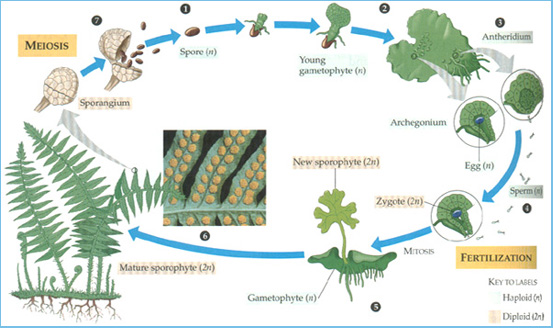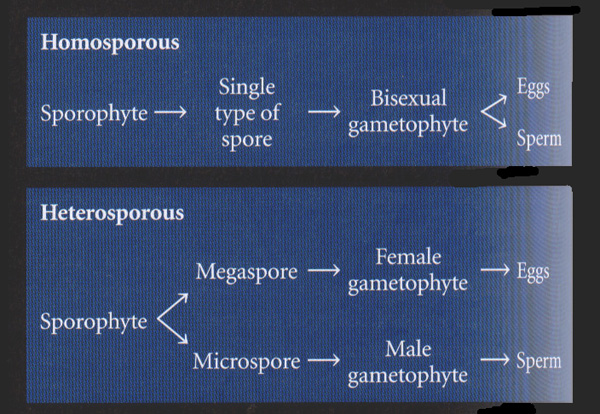I N T R O D U C T I O N
The life cycle of a fern

Most ferns are homosporous, meaning that they produce a single type of spore. After a fern spore settles in a favorable place, 2 it develops into a small, heart-shaped gametophyte that sustains itself by photosynthesis. 3 Each gametophyte has both male and female sex organs, but the archegonia and antheridia usually mature at different times, ensuring cross-fertilization between gametophytes. 4 Fern sperm, like those of all seedless vascular plants, use flagella to swim through moisture from antheridia to eggs in the archegonia and then fertilize the eggs. 5 A fertilized egg develops into a new sporophyte, and the young plant grows out from an archegonium of its parent, the gametophyte. 6 The spots on the underside of the leaves (sporophylls) are called sori. Each sorus is a cluster of sporangia. 7 Sporangia release spores, which give rise to gametophytes (Campbell et al, 1999).
Ferns can also be used to illustrate the variation between homosporous and heterosporous plants. Each system features differences in the life cycle of vascular plants. The diagram below should help contrast the two:

|
|
|